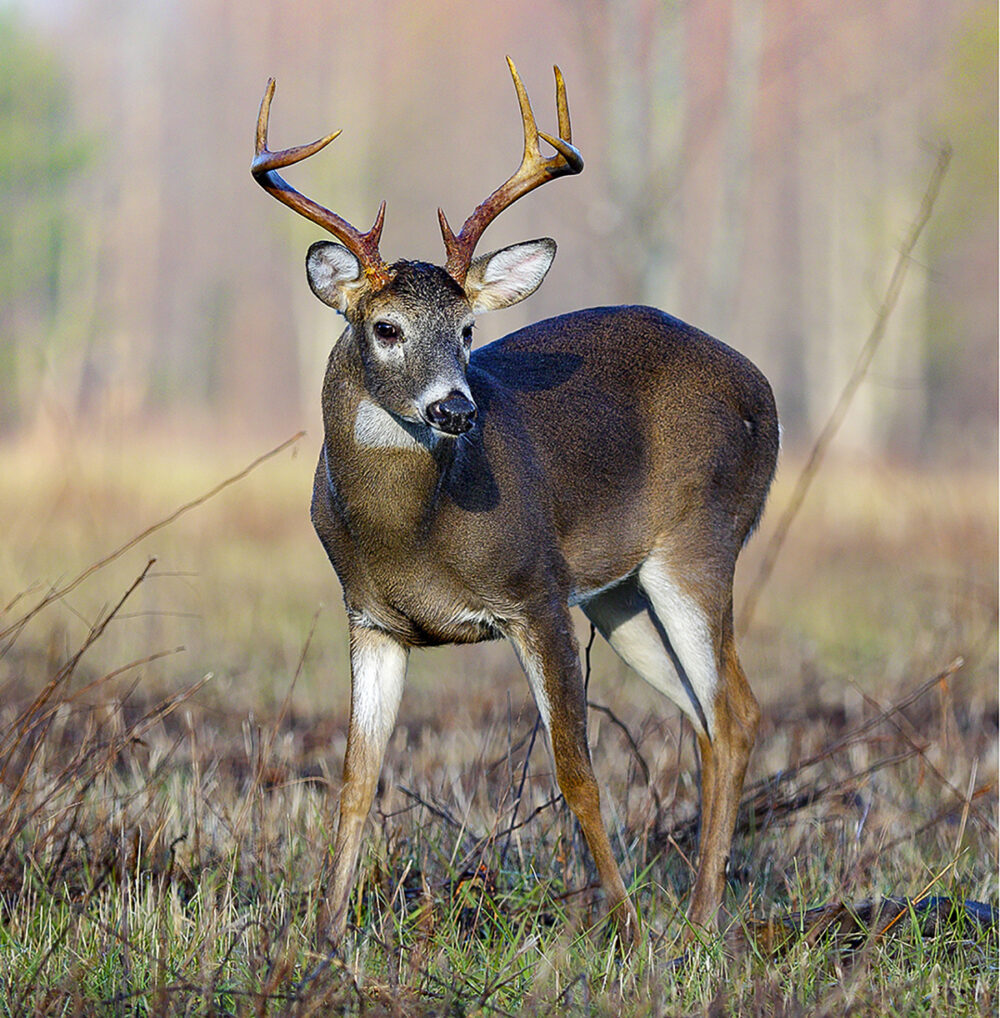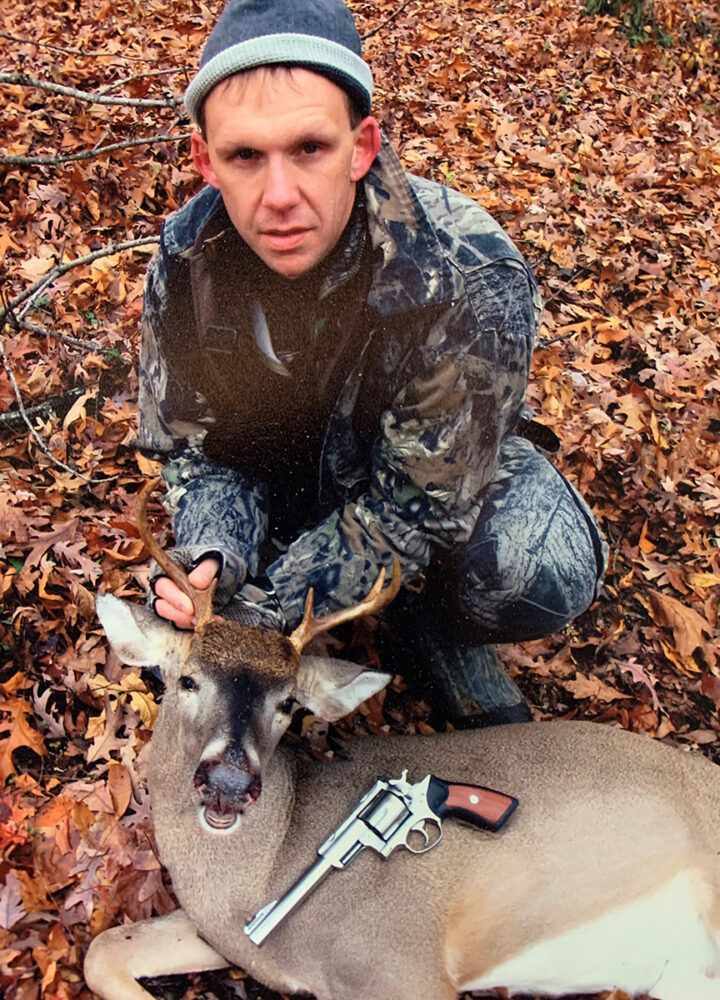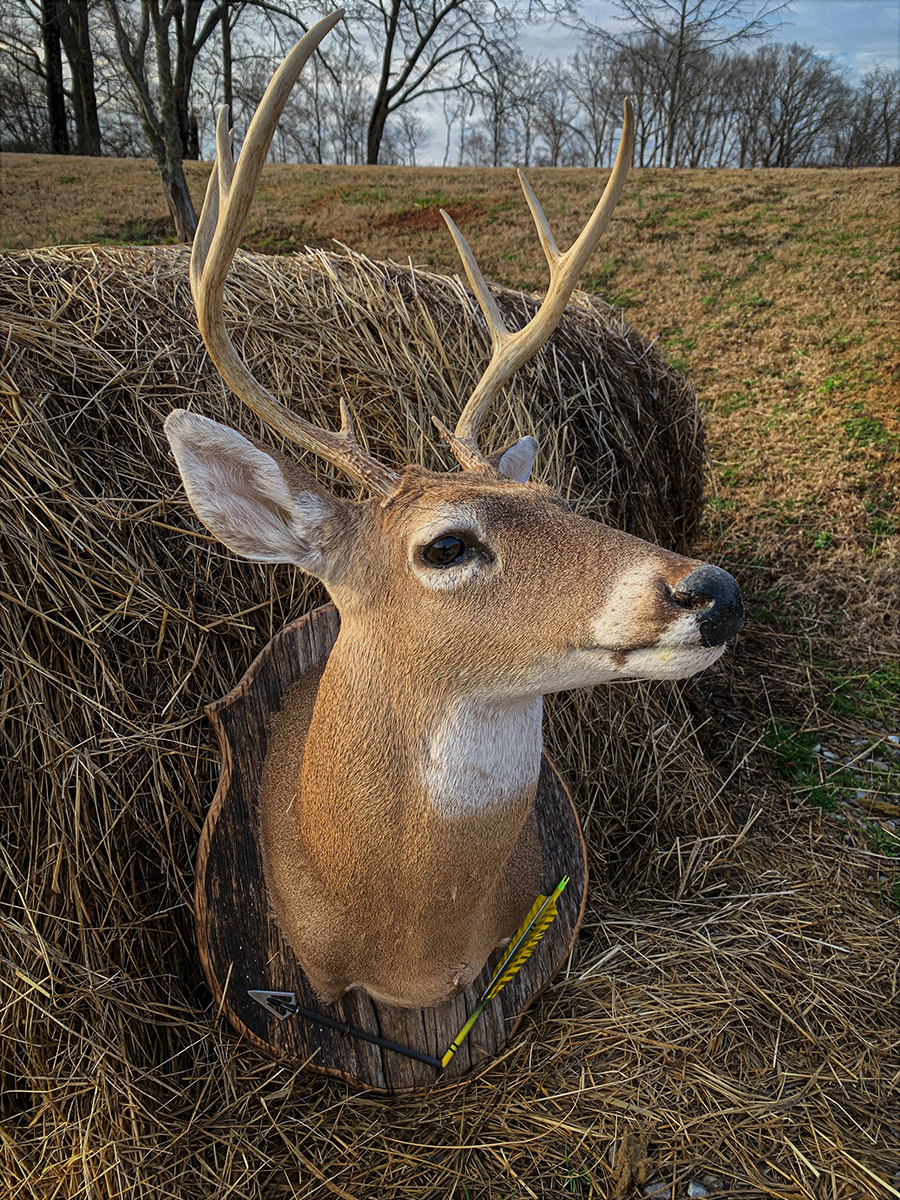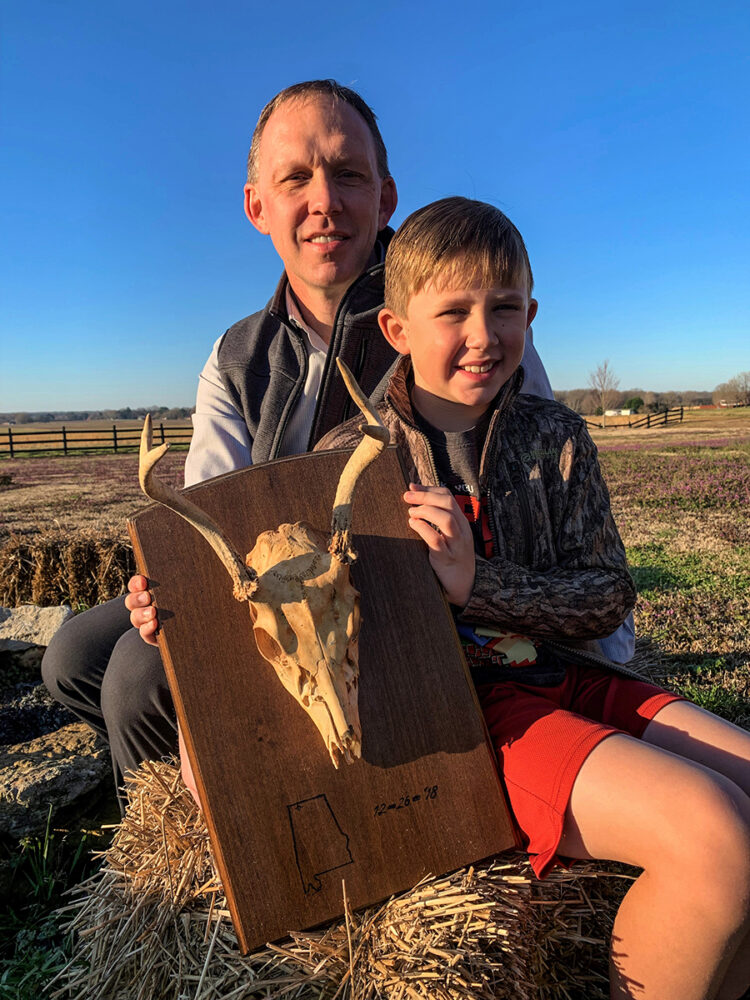Trophy bucks are often measured in different ways by different hunters they always create lasting memories of the hunt that will last for a lifetime!
By Matt Green for Whitetail Times
Photos by Matt Green
Several years ago, my close friend Chris invited me to the Howard Hill Classic traditional archery shoot at Tannehill State Park in McCalla, Alabama. Being an avid outdoorsman, a pleasant weather forecast and an otherwise empty Saturday agenda made this an easy decision. Plus, I knew going to the shoot would give Chris and me a chance to relive our high school football glory days. Since our past athletic feats tend to “get better” with each discussion, the date was set!
Chris and I share an enthusiasm for hunting whitetails. He cut his teeth in part on traditional archery because of his father’s interest. In contrast, I had started with a rifle, though I had graduated to a compound bow several years back. Not one to be shy, I didn’t let my comparative inexperience hold me up. We met at the park, he graciously equipped me with a loaner long bow, and after a few warm-up shots at the practice range, our trek through the Tannehill course began. My shooting left much to be desired. However, even with several arrows lost either consumed by the underbrush or broken from clean misses, my addiction to traditional archery began. Two seasons later I harvested my first deer with a recurve.
While I still hunt with a variety of equipment, I clearly recall the draw (pun intended) toward taking a deer with traditional gear. In retrospect, I am confident that seeking a new challenge was a large part of the appeal. I hadn’t grown tired of deer hunting when I first entered the traditional realm, but a novel approach had reinvigorated my enthusiasm.
What about you? What do you consider the progressive “stages” in the challenge of deer hunting? And, perhaps more importantly, what is your next challenge?

A trophy buck is in the eye of the beholder. Most hunters will never forget their first buck and the mounted antler rack provides treasured memories for years to come. Hunters that continue to challenge themselves with traditional archery and blackpowder equipment often set a different standard. Enjoy your hunting experience and accept the challenge to take a buck that meets your trophy exceptions. Photo by Ryan Yoder
Much is made of the headgear on whitetails, and no one discredits the thrill of chasing a large, mature old bruiser. However, when defining a trophy, truthfully, the “beauty is in the eye of the beholder.” As a youngster, simply getting to the woods is exciting. Depending on the local population, seeing deer—any deer—may likewise provide a thrill. Generating enthusiasm constitutes success even if no shots are taken. Elation is a typical response to taking a healthy doe for a novice, and for most beginners that would be with a firearm.
Hopefully then, perhaps with some wisdom and coaching from experienced hunters, we set our sights on a buck. At this point essentially, any racked deer is a reasonable sequential goal. With some luck we find success and the memories of wrapping our hands around that first set of antlers is not easily forgotten. I recall Chris driving over to help field dress my first buck. Mom had agreed she’d pay for a mount if I could take a deer. That modest seven-point “trophy,” taken over 30 years ago hangs to this day on the wall of my parents’ house. I smile to myself every time I see it.
Hunting experience and the number of animals taken depend on many factors. Time spent afield, the local deer population, hunting strategy, and marksmanship are but a few factors influencing harvest records. Harvesting “management” does aside, at some point hunters will show greater selectivity and begin to seek out more mature animals. Granted, “mature” likely hinges partially on the local population and management approach.
Advantages of selectivity include allowing the younger deer to continue growing—an unlikely thought when one has yet to take their first deer. At this point a “trophy” can be defined to be a buck of a certain score, having a certain number of points, a given age or simply of greater quality than our best to date. Again, a trophy is defined by the hunter, influenced by their unique situation and hunting history.
While hunting a friend’s farm in Kentucky one year at the peak of the rut, daylight brought great promise as numerous deer emerged from the woods as fingers of sunlight slipped through the crisp November sky. Nervous does scurried through the field. I hoped their anxiety was tied to nearby bucks who would interrupt their early morning greenfield meal.
The first antlered deer that appeared was across the large field. The snow-white rack reflected enough light even at a distance to raise my heart rate. However, I had hunted hard that fall and I had suspicions of better deer nearby. I watched as this buck passed and wondered as he trotted out of sight if regret lay in my future. Later that morning my patience paid dividends as I shot my best buck to date. I took that deer with the rifle I purchased as a teenager.
A different season I found myself hunting a familiar spot in Alabama in late November. Experience from years past set the tone for high expectations. Earlier that season, I had felt the slightest bit stale hunting with a rifle. Hankering to raise the bar a bit I decided to carry my Ruger Super Red Hawk in 44 Magnum pistol, an anniversary gift from my wife (I indisputably married up!). To take a deer with that pistol would be special, but of course a greater challenge due to the decreased effective range. The buck I took that year was among the smallest I had ever taken. However, with the added difficulty of using my handgun I had lowered my standards for the size deer I would be willing to shoot. That trophy still ranks among my favorites and certainly not because of its size. To date it is the only deer I’ve ever harvested with a handgun.

The author took this rutting buck at less than 20 yards with a 44 magnum. While this would have been a “pass” with rifle, the “handgun” challenge resulted in a memorable harvest.
Similar to a handgun, using a bow requires closing the distance in addition to the added stealth necessary to draw without being seen, not to mention the discipline to remain calm waiting on an ethical shot. Transitioning to a weapon that requires increased skill and a shorter kill range introduces a greater challenge. Consequently, we may modify what we consider harvesting. With new weaponry, “any deer” including a doe constitutes success.
Once that tag is filled, there may be a systemic transition from any legal buck to a buck of a certain age or score, again with the more challenging weapon. Fifteen years ago, I could not envision allowing a legal deer to pass in bow range without losing an arrow. Now, having taken several with my compound, I find great pleasure in being in bow range of deer and just observing their behavior, possibly sneaking in some photos while waiting on the next wall-hanger.
There came a time when I declined to hunt other than with my compound bow. I was content missing out on some nicer bucks because they were just out of bow range but easy shots with a rifle. I found myself consistently passing does and small bucks. What would spice things up again? I decided I wanted to take a deer—any deer—with my bow while hunting on the ground.
I left work early one day in October and set up in a dry creek bed near a bedding area. After sinking into a set of bushes for cover, I started a rattling sequence. With the wind left to right, I hoped to coax something out of the thick timber directly in front of me into the small open field. Surprisingly, I had a spike blitz in from behind me. The young buck crossed the branch to my left at less than 10 yards. I froze and waited for him to clear the bushes. Quartering away, his gait slowed, and his head dropped to sniff the ground. I drew and made a perfect 15-yard shot from my knees. With my newly defined ambition, this spike became my next trophy. The details of this hunt where I achieved an established goal, are a clear and pleasant memory.
Following my “ground level” deer, my next challenge was the recurve mentioned in the opening. While my aim was to take a deer—any deer—with my recurve, in this case I was blessed with a taste of beginner’s luck.
Among the first hunts of the year in Alabama in late October, I climbed in my stand at the intersection of two fences near a travel corridor bordering a bedding area. As daylight broke, I caught movement 80 yards down a gentle slope. A decent-size deer eased through a creek bed. It was too dark for detail, but I was fairly certain the deer had antlers. But no matter, on this hunt, any legal deer was fine! I lost sight of the buck for several minutes but then I noticed a small buck trotting from the opposite direction on a trail toward one of my shooting lanes. Behind the small buck trailed the larger buck, a much nicer target. The lead buck passed, and I bleated to stop the larger one. He posed perfectly. On release, the shot felt good but, until we have our hands on the horns, nothing is a sure thing.
At 150 yards I found my buck, centerpunched. That mount is now in my basement. The broadhead recovered from the far side shoulder is mounted on the board just below the head. This eight-point was not a record-book buck, but my first with traditional equipment and therefore a trophy in my book.

The author took this eight-point buck at 22 yards with a 42lb recurve bow. The early season deer resulted from a self-imposed challenge after a summer’s worth of practice with traditional equipment having no sights. As a bonus, the broadhead used for the kill can be seen on the mount.
Since taking my first buck with a recurve, I continue to hunt with a variety of equipment and have hunted on the ground, sometimes on public land, which also elevates the challenge. No deer has yet ventured into “recurve range” on these hunts. At some point though, one will make that fatal mistake and another trophy will fall regardless of the size of the antlers. I also take my son and daughter hunting. I hope to be there when their journey starts. I anticipate witnessing their trophies will provide even greater pleasure than taking my own.

The author and his son with their “First Deer together”. These ‘best buddies’ worked together to harvest the deer and also on the personalized mount for a lifetime of memories.
What’s your next challenge, taking a deer from public land to test your woodsmanship? A 140-class buck with a bow instead of a rifle? There’s something magic about being close enough to a whitetail to hear them crunching acorns. Traditional bows are most often shot instinctively without use of sight pins, an inarguable challenge. What about taking a young person to the woods to help them get a healthy start?
Set a goal and commit to following through. Hunt with a purpose and don’t be afraid to challenge yourself. Remember, success is a journey, not a destination, and trophies are not always defined by the size of the antlers.
Matt Green is the Associate Dean Professor of Exercise Science at University of North Alabama. While he teaches and conducts research in exercise physiology, he is an avid deer hunter. In addition to publishing in scientific journals, he enjoys writing about whitetails and hunting in general. Green lives on a small farm just outside of Rogersville, Alabama, with his family.
©Virginia Deer Hunters Association. For attribution information and reprint rights, contact Denny Quaiff, Executive Director, VDHA.



